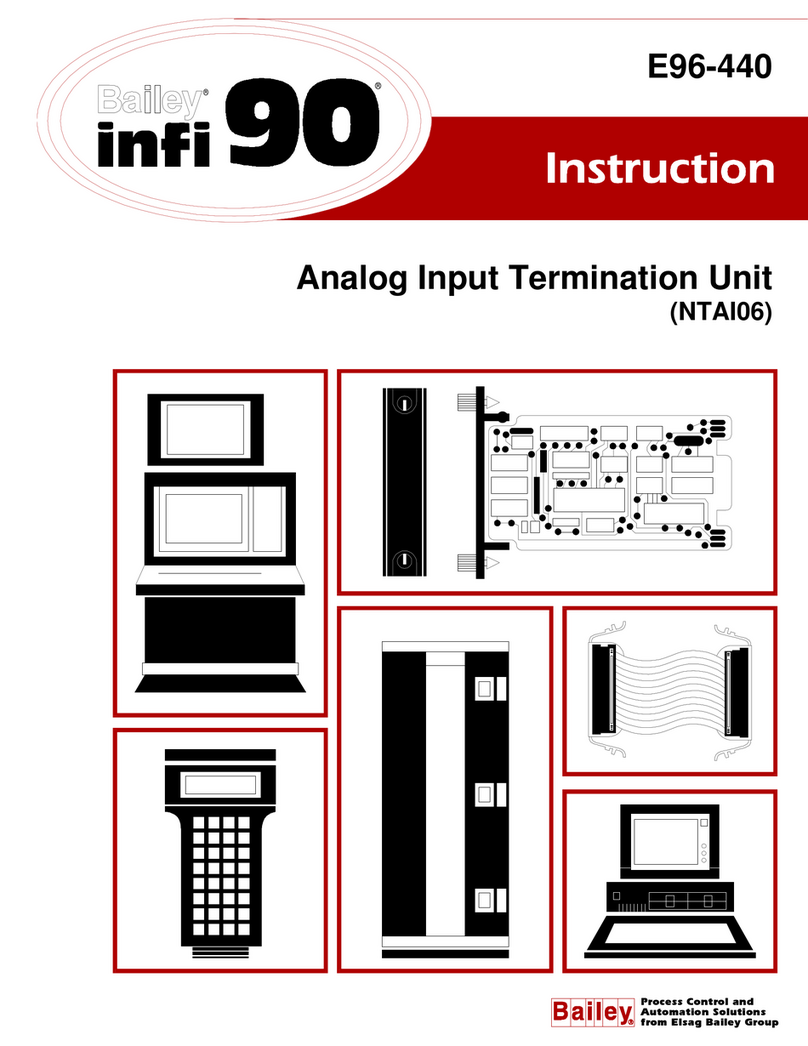
Table of Contents
Page
I-E96-202B iii
SECTION 1 - INTRODUCTION....................................................................................................1-1
OVERVIEW ..................................................................................................................1-1
INTENDED USER.........................................................................................................1-1
HARDWARE DESCRIPTION..........................................................................................1-1
Faceplate ...............................................................................................................1-2
Circuit Board .........................................................................................................1-3
HARDWARE APPLICATION...........................................................................................1-3
FEATURES...................................................................................................................1-3
INSTRUCTION CONTENT .............................................................................................1-3
HOW TO USE THIS MANUAL .......................................................................................1-4
REFERENCE DOCUMENTS..........................................................................................1-4
NOMENCLATURE ........................................................................................................1-4
GLOSSARY OF TERMS AND ABBREVIATIONS .............................................................1-5
SPECIFICATIONS.........................................................................................................1-6
SECTION 2 - DESCRIPTION AND OPERATION........................................................................2-1
INTRODUCTION...........................................................................................................2-1
MICROPROCESSOR.....................................................................................................2-1
CLOCK AND TIMER .....................................................................................................2-2
MEMORY .....................................................................................................................2-2
I/O EXPANDER BUS....................................................................................................2-2
I/O SECTION ...............................................................................................................2-2
SERIAL CHANNELS......................................................................................................2-3
DMA SECTION .............................................................................................................2-3
CONTROLWAY .............................................................................................................2-3
REDUNDANCY LINK ....................................................................................................2-4
STATION LINK .............................................................................................................2-4
SECTION 3 - INSTALLATION.....................................................................................................3-1
INTRODUCTION...........................................................................................................3-1
SPECIAL HANDLING ....................................................................................................3-1
UNPACKING AND INSPECTION ....................................................................................3-2
SETUP AND PHYSICAL INSTALLATION ........................................................................3-2
Dipswitch SW3 Settings .........................................................................................3-2
Dipswitch SW4 Settings .........................................................................................3-4
Special Operations.................................................................................................3-5
Jumpers J1 through J5 .........................................................................................3-6
PREPARING THE MODULE MOUNTING UNIT ..............................................................3-7
Dipshunts..............................................................................................................3-7
Controlway Cable...................................................................................................3-8
INSTALLING THE TERMINATION UNIT OR MODULE....................................................3-8
NTMP01 Termination Unit Installation ...................................................................3-8
NIMP01 or NIMP02 Termination Module Installation ..............................................3-9
INSTALLING THE MODULE..........................................................................................3-9
SECTION 4 - OPERATING PROCEDURES................................................................................4-1
INTRODUCTION...........................................................................................................4-1
STARTUP .....................................................................................................................4-1
LED INDICATORS ........................................................................................................4-1
Front Panel LEDs One through Eight .....................................................................4-2
Red/Green Status LED ..........................................................................................4-2
STOP/RESET SWITCH .................................................................................................4-3





























